I am attempting to design an analog circuit similar to this circuit
My goal is to make it so when the SPST is closed (connected), the microphone line is 'live'. When the SPST is open, the microphone line is muted.
I currently am able to reproduce this circuit in my breadboard, however the logic is inverted (open switch = unmuted, closed switch = muted).
Solution 1
Solution 2
I've also tried this very similar circuit. While it effectively does mutes the same way, the logic is inverted so that it only mutes when the switch is closed.
Solution 3
I have tried using just a SPST switch, however there is a loud pop when connecting/disconnecting.
I have tried connecting a 100k resistor and the capacitors in parallel with the SPST switch, however that causes no audio to be delivered (and may be damaging my laptop since I have to unplug/replug in the audio to get audio working again).
I am an amateur and I've been trying to solve this problem for several days now. How can I invert the logic so that the system is muted when the switch is 'open', and the microphone is live when the switch is 'closed'. Any guidance appreciated.
Research I've done
- Youtube video on original mute switch design
- Youtube video on making a mute switch
- 5v Electret microphone to PC mute switch pop help
- Microphone mute anti-pop circuit works but still picks up a little audio
- http://www.discovercircuits.com/H-Corner/popfree%20micophone%20switch.htm
- https://electronics.stackexchange.com/a/465047/23954
- Youtube video showing mute circuit using BC547C/2SC1775
- audio circuits
- neat circuits
Update: It seems there may be better circuits to mute a circuit. See this blog
Also there are dedicated chips like MAX9890 to eliminate pops
